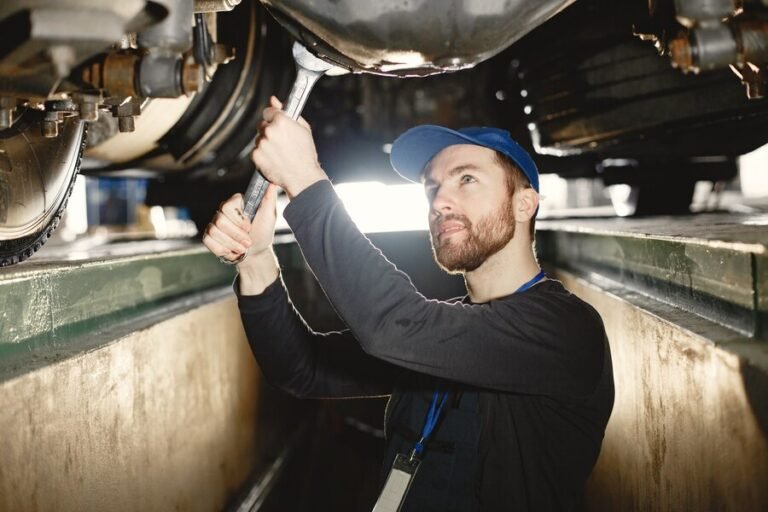For fleet managers, mechanics, and truck drivers alike, maintaining a vehicle’s functionality goes beyond engine checks and regular tire rotations. The truck bed, often overlooked but heavily relied upon, plays a critical role in day-to-day operations. From hauling heavy materials to acting as a workspace, truck beds endure wear, tear, and—unfortunately—frequent encounters with grease and contaminants.
When grease accumulates in the truck bed, it doesn’t just harm the surface—it can create operational inefficiencies, compromise safety, and even lead to costly repairs. Addressing issues like “cama de camion con grasa al lado” isn’t just an aesthetic concern—it’s a critical part of maintenance. This blog will explore how grease buildup occurs, its impact, and actionable steps to ensure your truck bed stays clean and functional.
The Issue with Grease in Truck Beds
How Grease Buildup Happens
Truck beds confront a variety of contaminants daily, grease being one of the most common culprits. Think about it—whether you’re hauling industrial equipment, operating under lubricated machinery, or servicing vehicles in the field, grease often ends up in the truck bed. Over time, this buildup compounds due to:
- Leaks from machinery.
- Unsecured or improperly stored equipment.
- Residue from cargo or repair tasks.
Consequences of Grease Buildup
A greasy truck bed doesn’t just ruin appearances; it poses several serious risks:
- Safety Hazards: Grease creates slick surfaces that can lead to workplace injuries, especially during loading or unloading.
- Material and Equipment Damage: Prolonged grease exposure can corrode certain materials, affect tools stored in the bed, and weaken truck bed structures.
- Operational Downtime: The more grease accumulates, the harder it becomes to clean. This waste of time impacts operational efficiency and, ultimately, profitability.
- Resale Value: A neglected, grease-covered truck bed can significantly reduce the truck’s resale value due to visible damage and the potential for underlying issues.
Best Practices for Maintaining a Clean Truck Bed
The good news? Regular maintenance and simple measures can go a long way toward eliminating grease-related issues. Here’s how:
1. Develop a Regular Cleaning Routine
Keeping a cleaning schedule is key. Depending on how frequently your truck is exposed to grease, aim to clean the bed weekly or after particularly messy jobs. Use dedicated degreasers and heavy-duty cleaning agents specifically designed for metal surfaces. Avoid using abrasive brushes that could scratch and weaken your truck bed’s finish.
2. Reach for the Right Products
Just like tools, cleaning solutions matter. Look for:
- Degreasers: Products like Simple Green D Pro or industrial-grade brake cleaner can break down stubborn grease without damaging your truck bed.
- Pressure Washers: Combine water pressure with cleaning agents to thoroughly scrub away grease.
- Eco-Friendly Solutions: For environmentally conscious drivers and managers, there are biodegradable degreasers that work just as effectively.
3. Handle Waste Properly
Improper disposal of grease or contaminated water poses both environmental and legal risks. Always follow local disposal guidelines. For larger-scale cleanups, consider partnering with waste management services that specialize in hazardous material recycling.
4. Dry and Protect
After cleaning, ensure the truck bed is thoroughly dried to prevent rust formation and further grease adherence. Microfiber towels or absorbent cloths work best for this step.
The Role of Protective Liners
Protecting Your Truck Bed from Future Build-Up
One of the smartest investments you can make for your truck is a protective bed liner. These barriers prevent grease, water, and other contaminants from coming into direct contact with your truck’s metal surface.
Types of Truck Bed Liners
Understanding your options can help determine which liner best suits your needs:
- Drop-In Liners: Quick and easy to install, these liners provide a rugged barrier against debris and grease. However, over time, grease may seep between the liner and the metal bed.
- Spray-On Liners: A more permanent solution, spray-on liners form a custom-fit, airtight seal on your truck bed, offering superior protection.
- Rubber Mats: Ideal for light-duty jobs, rubber mats are affordable and prevent grease buildup from affecting your truck bed. They’re easy to remove and clean as well.
- Carpet Liners: While not as grease-resistant as other options, carpet liners are suitable when hauling fragile or lightweight items.
Balancing Cost and Benefits
While protective liners involve an upfront cost, the long-term savings they deliver in terms of reduced maintenance and increased durability make them a worthwhile investment. Consider your usage patterns to decide which option best suits your truck.
Case Studies and Success Stories
The following examples highlight the tangible benefits of addressing grease buildup and implementing protective measures:
- Fleet Manager’s Success: A logistics fleet in Dallas integrated spray-on liners into their trucks and scheduled weekly cleanings for high-traffic vehicles. They reported a 35% reduction in maintenance downtime within six months.
- Mechanic-Turned-Manager: A service truck mechanic in Phoenix swears by rubber mats for his personal vehicle. By cleaning weekly and swapping out the mat twice a year, his truck bed remains in impeccable condition, even after years of hauling heavy machinery.
- Owner-Operator Efficiency: An independent truck driver in Florida discovered that dedicating just 20 minutes every Sunday to a pressure wash saved him from costly repairs when it came time to sell his truck.
Keep Your Truck Bed Grease-Free and Functional
Grease and contaminants don’t stand a chance when met with regular care and smart preventative measures. By implementing cleaning routines, using protective liners, and opting for the right tools, you can safeguard your truck bed and ensure peak operational performance.
We want to hear from you—what are your go-to tips for managing “cama de camion con grasa al lado”? Share your experiences in the comments below, and check out our exclusive resources for fleet managers and drivers looking to optimize their vehicles.

